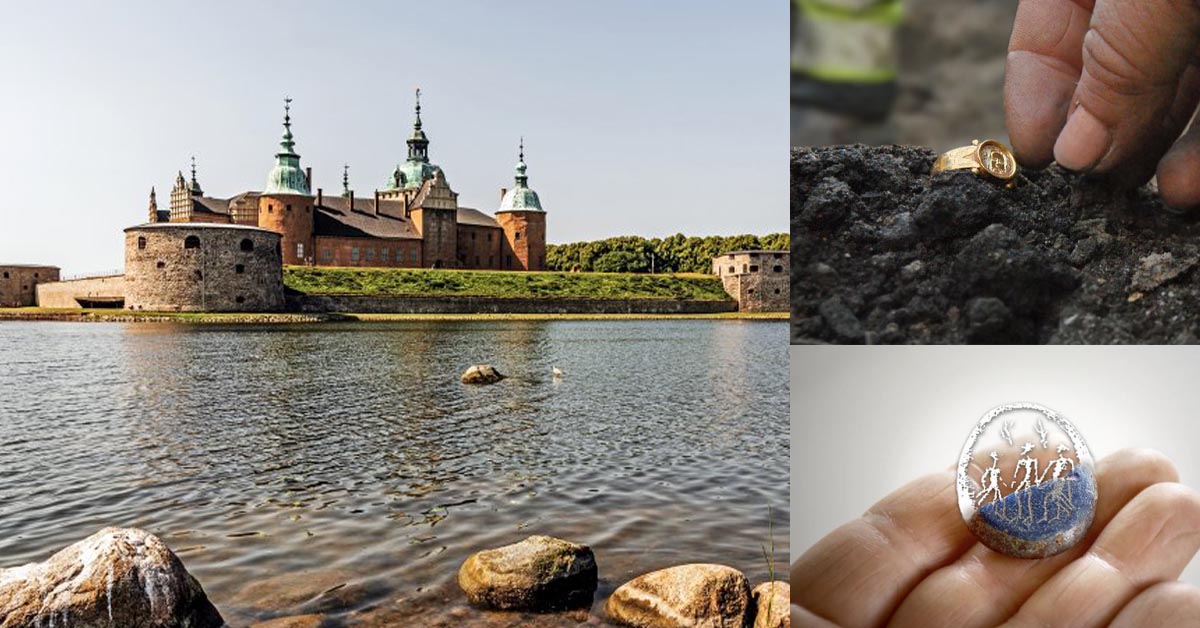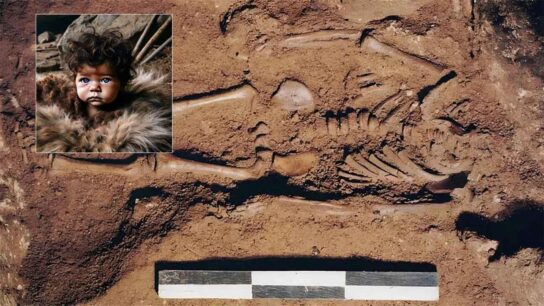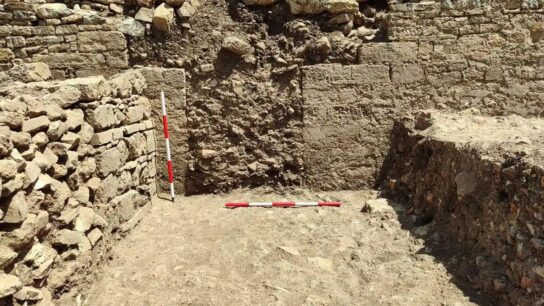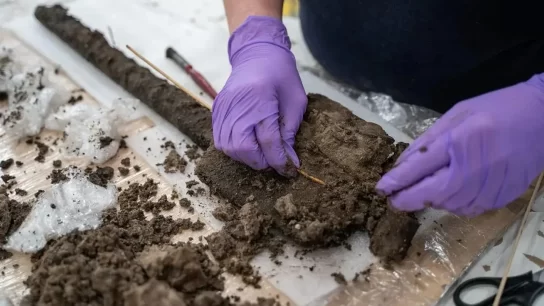Marvelous Alsengem Unearthed Among 30,000 Archaeological Artifacts in Kalmar, Sweden
For the past two years, archaeologists have excavated in the Old Town of Kalmar, Sweden. Recently, at a press conference held at Kalmar Castle, archaeologists from the National Historical Museums of Sweden unveiled their remarkable discoveries.

The team announced they have unearthed over 30,000 archaeological artifacts dating back to between the 13th and 17th centuries. Among these fascinating finds were a distinctive gold ring and a glass amulet.
These extensive excavations were initiated in conjunction with plans to install new water and sewer lines in the Old Town of Kalmar.
Archaeologists have made a significant discovery, unearthing remnants of numerous structures, cellars, streets, latrines, and everyday items from the period of 1250-1650. Some of these intriguing artifacts can be associated with the Kalmar War in 1611.
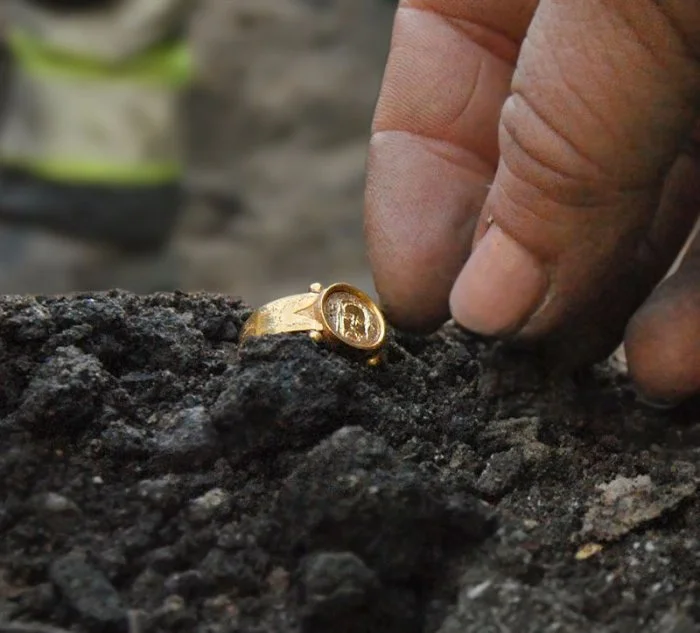
It is rare to conduct such comprehensive explorations within a city center – this situation is unique. The findings have surpassed all anticipations and can be described as nothing less than extraordinary.
“We have been able to lift the lid on the city’s Middle Ages and have had the opportunity to study how people lived, what they ate and drank and how this changed over time.
Archeology becomes like a peephole into medieval history that allows us to learn more about how life was several hundred years ago,” Magnus Stibéus, project manager at the Archaeologists, said.
Stibéus highlights two particular artifacts that have been excavated. These include a gold ring and an exceptional item referred to as an “Alsengem.”
“Of course, it’s great fun to find something like that. The gold ring was in almost new condition with a Christ motif and was found, like the alsengem, in contexts that we interpreted as waste storage.
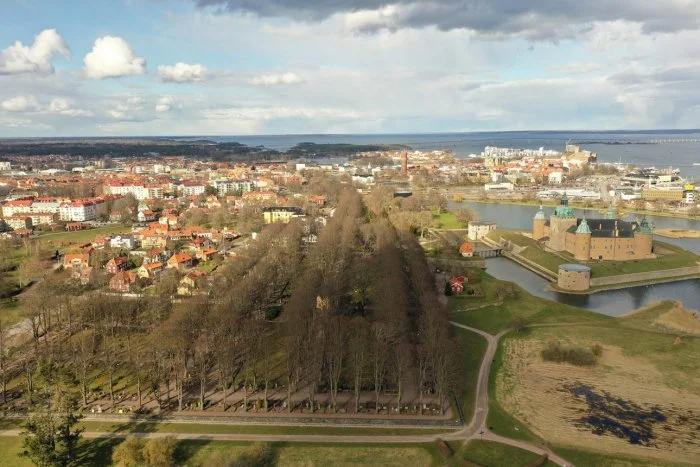
Someone was probably unlucky and lost the ring 500 years ago. The alsengem is broken and may have been thrown away,” Stibéus said.
The gold ring, adorned with a carved figure of Christ, is believed to originate from the early 15th century. Its tiny size suggests that it may have been designed for a woman. Similar rings have been discovered in Northern Finland, Östergötland and Uppland.
Alsengemmer refers to diminutive glass setting stones found in both religious and secular environments. These are thought to have served as amulets for pilgrims.
The term ‘Alsengemmer’ originates from the Danish island of Als – the location where these artifacts were first discovered. An alsengem dating back to the 13th-14th centuries, featuring three carved figures, was unearthed in Kalmar by archaeologists.
Among the more extraordinary discoveries made by the archaeologists are remains of a rune stone, which is believed to have originated from a burial mound in a cemetery situated in Kalmar during the 12th century. Another intriguing discovery includes a brick imprinted with a cat’s paw print.
Furthermore, numerous traces provide evidence of historical war scenarios and illustrate how the Kalmar War profoundly impacted the city.
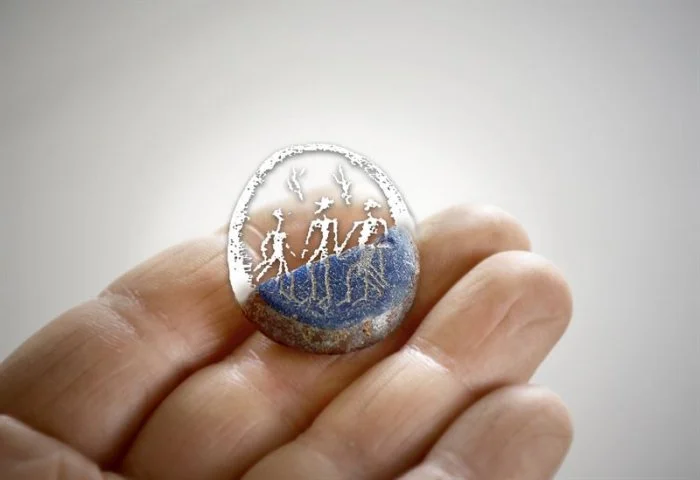
“The investigations show that virtually all farms were burned in connection with the Danes’ attack on the city in the summer of 1611. This is visible above all through fire horizons and razed buildings. We have also found many projectiles, such as cannonballs, musket balls, pistol bullets, and swords.
The building remains and the cultural warehouses form a historical archive that holds enormous amounts of information and stories about previous generations’ political and economic ambitions, everyday life and living conditions.
We get an insight into large parts of the medieval city and encounter traces of the social and economic existence of different groups; traders, craftsmen, civil servants, church people, poor and rich,” Stibéus explained.

